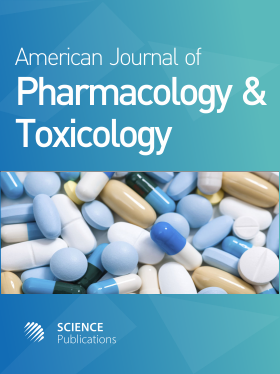Using Bioequivalence Approach to Assess Toxicity Effect of Herbal Products, TyrelTM and RumbionTM
- 1 University of New England, United States
Abstract
Problem statement: Herbal products have been widely used in veterinary healthcare. Recently, an experiment was conducted in the Natural Animal Facility Pvt. Ltd., Bangalore, India on ten Albino Wistar female mice to assess the acute oral toxicity of two herbal products, TyrelTM and RumbionTM. However, the researchers did not evaluate the toxicity effect of the two products in terms of the bioequivalence approach. Two drugs are considered bioequivalent when there is no significant difference between them in terms of their absorption rates. For this study, we used body weight instead of absorption rate due to the lack of absorption rate information in the data. Bioequivalence studies provide another approach to evaluate the safety of veterinary healthcare products. The objective of this study is to evaluate whether the two herbal products, TyrelTM and RumbionTM are bioequivalent in terms of their toxicity effect. Approach: In this study, TyrelTM and RumbionTM were orally administered to 5 mice at 5000 mg kg-1 body weight sequentially. The body weight of each mouse was repeatedly measured at three time points: day 0, 7 and 14. To assess their bioequivalence, we approximated the Area Under the Curve (AUC) of the body weight of each mouse versus time for each mouse for each herbal product. Bootstrapped confidence intervals were computed to test the hypotheses of bioequivalence of the two products. Results: The ratio of the average AUCs of TyrelTM and RumbionTM at 5000 mg kg-1 body weight was 1.008 (g) and the 90% bootstrapped confidence interval of the ratio of was (0.977, 1.053), which falls within the predefined bioequivalence limits, 0.8 to 1.25. Conclusion: Based on the bioequivalence study, we concluded that there was no significant difference between the toxicity effect of TyrelTM and RumbionTM at 5000 mg kg-1 body weight.
DOI: https://doi.org/10.3844/ajptsp.2010.109.111

- 4,383 Views
- 3,204 Downloads
- 0 Citations
Download
Keywords
- Bioequivalence
- Area Under the Curve (AUC)
- herbal products
- toxicity
